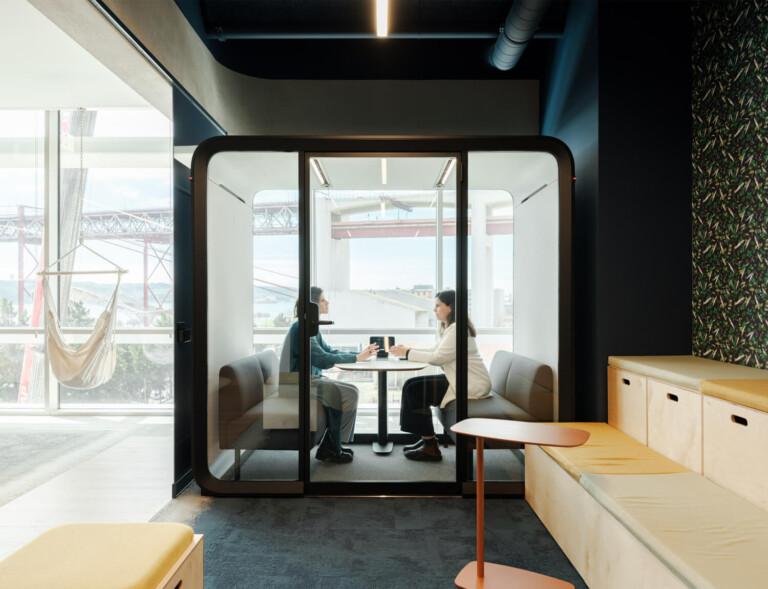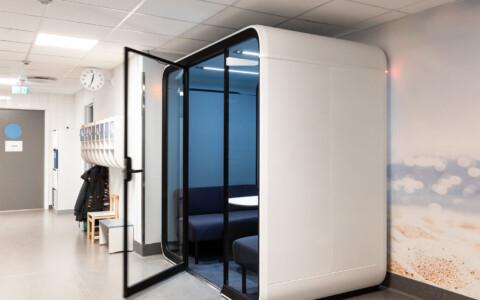Noise can take a great toll on office workers’ well-being and productivity, whether caused by loud chatter from colleagues, constant notifications, or the sounds of everyday office work. Employers should aim to provide their workers with a healthy and peaceful environment that fosters creativity and collaboration and does not hinder people’s ability to work.
Fortunately, different office noise reduction strategies can mitigate the harmful effects of background noise and other distracting sounds.
Key highlights
- Both high and low noise levels can negatively impact well-being and productivity at work. According to research, the optimal office noise level is around 50 dB.
- To reduce office noise, implement soundproofing materials, redesign office layouts, use soundproof office pods and implement sound masking technology.
- Sound masking systems reduce distractions by introducing subtle ambient noise that makes speech less intelligible.
What are the effects of office noise?
Before exploring ways to reduce noise, we first need to understand what noise is and its effects on people working in an office environment.
Although the usual concern is that the level of office noise is too high, there is such a thing as “too little office noise”.
According to a University of Arizona study, too much and too little noise in an office space can negatively affect the well-being of employees. Too much noise can make concentrating more difficult, increase stress levels, and cause headaches or other physical symptoms. Meanwhile, too little office noise can lead to boredom and decrease rather than improve productivity.
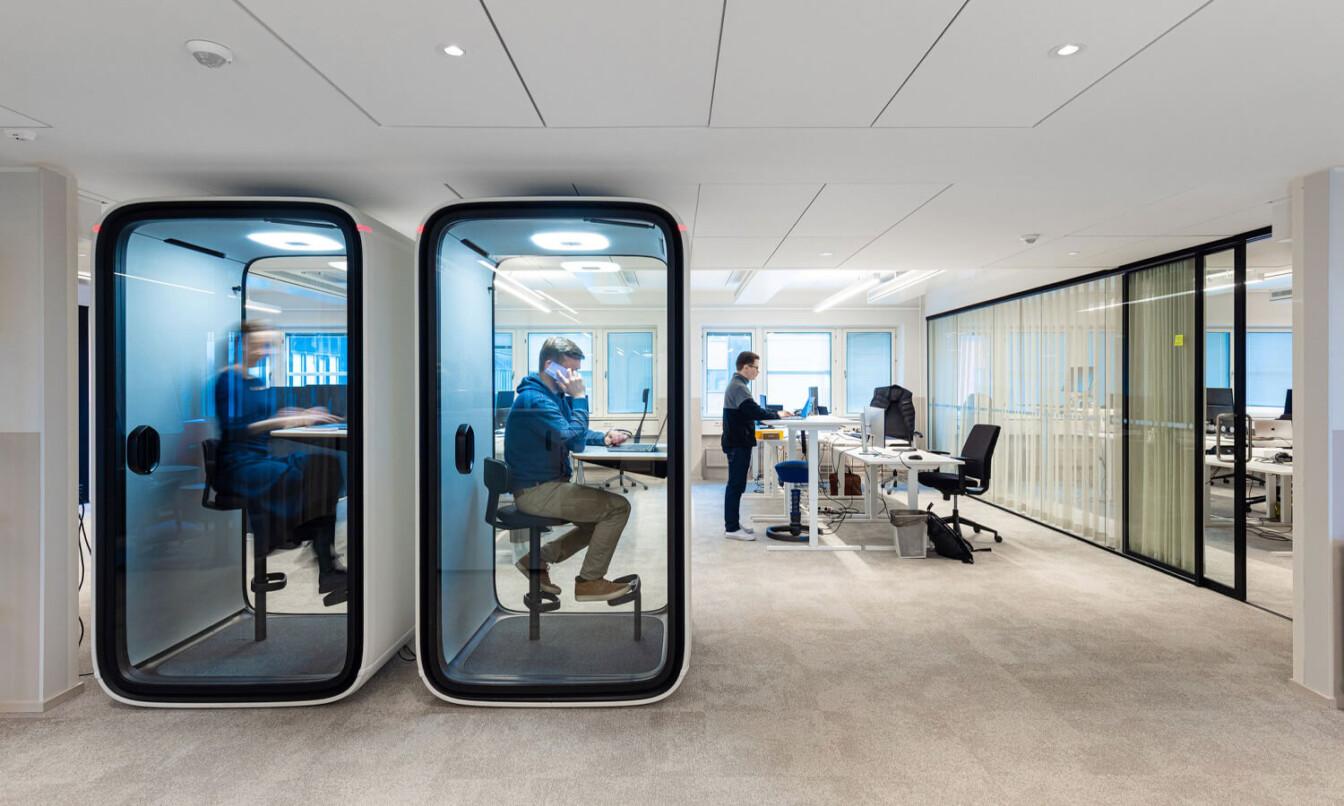
The sweet spot for office noise, the researchers say, is about 50 decibels, comparable to moderate rain or birdsong. At 50 decibels, the office noise level is not too loud to distract but still audible enough. In other words, office noise reduction should be at a level where sounds are slightly audible without becoming a distraction.
Framery’s smart office pods are designed to provide employees with private, soundproof spaces that enhance focus and productivity while combating harmful office noise. Equipped with advanced acoustics and innovative sound masking technology, Framery pods offer a comprehensive solution for noisy office environments.
Explore all Framery pods
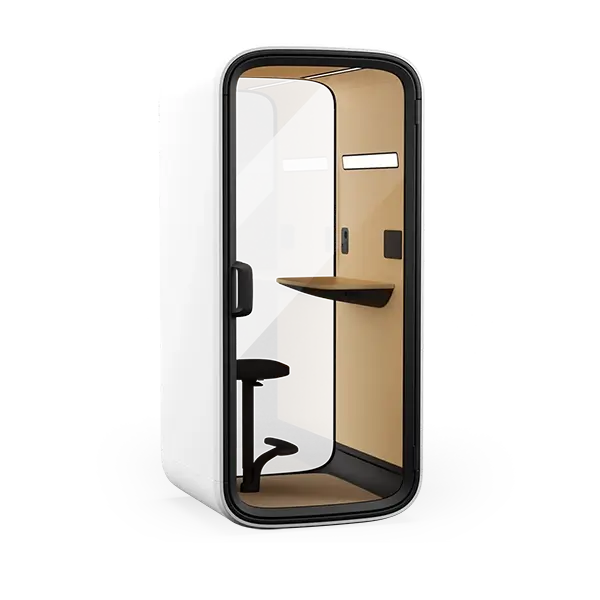
Typical noise levels in an office environment
The level of office noise (or any other sound for that matter) can be measured in decibels, dB in short. Prolonged exposure to loud noises without hearing protection (for example, eight hours to 90 dB or two hours to 100 dB) can damage hearing.
Some examples of different noise levels measured in decibels include:
- 0: Faintest audible sound
- 30: Whisper
- 60: Normal conversation
- 90 Lawnmower
- 100: Chainsaw
- 115: Loud rock concert, car horn
- 140: Gunshot, jet engine
- 180: Rocket launching pad
The threshold of pain is around 120-140 dB. However, how one experiences noise as painful is influenced by the frequency, duration of the noise, and individual factors, such as sensitivity to sound.
A typical noise level in an office is around 60 dB, although open office noise can rise to higher levels. Therefore, office workers should not worry too much about damage to their hearing at work. Nevertheless, background noise and other distracting sounds can have psychological effects.
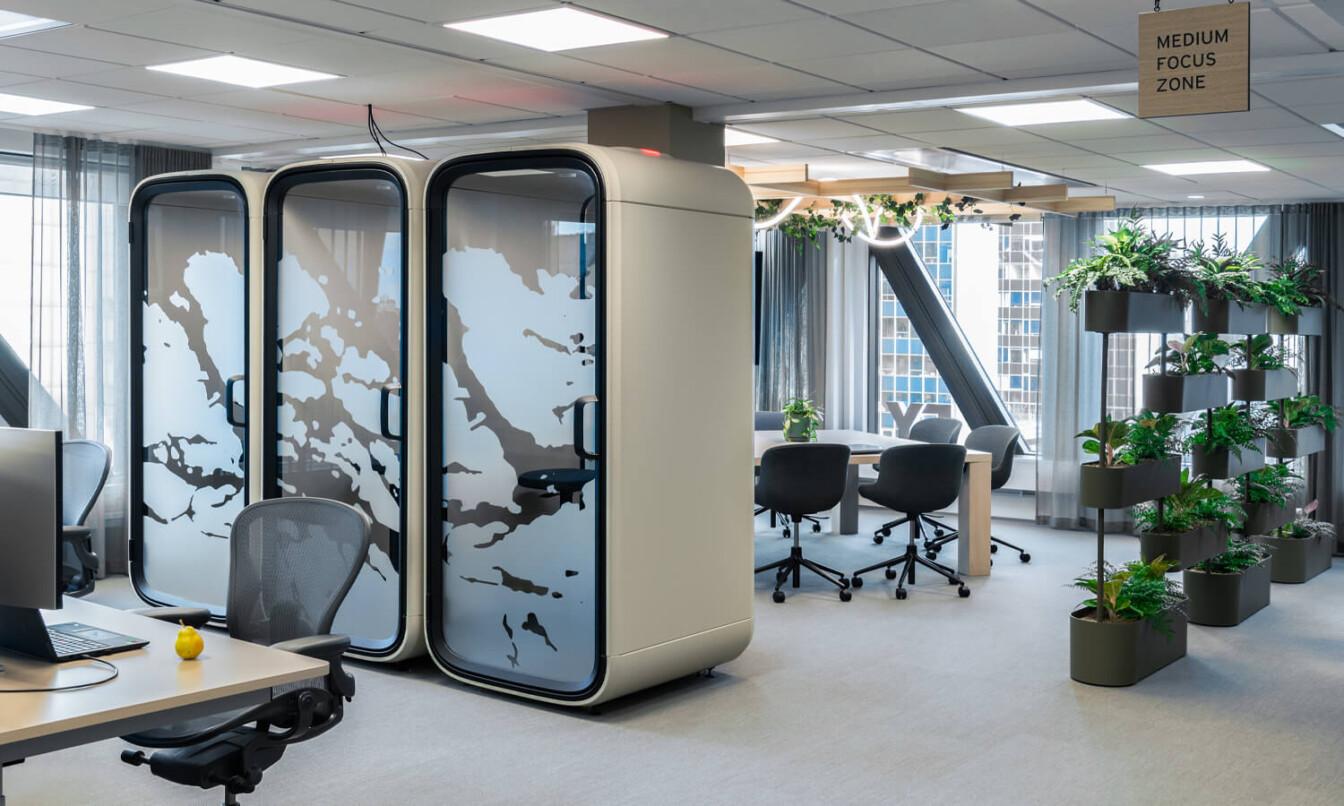
How to reduce office noise
Successful workdays start with an office design that promotes peace and removes distractions caused by ambient noise and other sounds that can hinder focus.
Meanwhile, things like noise-cancelling headphones and white noise machines are only partial solutions for reducing the impacts of distracting noise. Here are some tools for effective office noise reduction:
- Soundproofing materials: Acoustic wall panels are effective at sound reduction as they absorb sound in the environment. These kinds of noise reduction solutions come in different forms and can be installed on walls, ceilings and floors, for instance.
- Plants: You might be surprised to hear that adding plants to the office is another way to reduce noise. As an extra benefit, plants also improve indoor air quality and create a more peaceful atmosphere for many workers.
- Furniture: Much like acoustic panels and other soundproofing materials, soft office furniture, carpets, and rugs are also great at absorbing sound. When using furniture to reduce office noise, consider how it is placed around the office. For instance, more space between desks can help reduce noise levels.
- Office space design. Redesigning the office layout can notably impact sound levels. One office noise reduction tactic is dedicating certain areas for quiet work while reserving others for more casual interaction and collaboration.
- Soundproof office pods and booths. Sound-insulated booths and pods are designed for office settings where external noise can distract employees from their work. With proper office soundproofing, the pods can be placed even in the midst of otherwise noisy areas. Make sure there are enough office pods for the number of employees to avoid loud conversations in the open, where others might be distracted.
Download our Pod Placement guide to get the most out of your soundproof pods and integrate them into your office for maximum impact.

Framery pod placement guide
Combatting office noise with sound masking technology
Effective office noise reduction is not just about blocking sound but also managing how sound travels and is perceived. Sound masking is a proven technique that helps reduce noise distractions by making speech and other sounds less intelligible.
Instead of eliminating distracting sounds altogether, sound masking systems introduce a subtle background noise that blends into the environment. As a result, normally audible conversations fade into the background and become less distracting.
As long as a sound is intelligible, it can be a source of distraction.
Even moderate conversations can be disruptive in an open office, especially in quieter areas. Adding a controlled level of ambient sound improves speech privacy and makes background noise less intrusive. This allows employees to focus better without being distracted by nearby conversations.
Framery pods help create a more peaceful and productive workspace by combining high-performance soundproofing with smart sound masking. A built-in speaker improves the atmosphere outside the pods – and throughout the entire office. Framery One Compact™, Framery Four™, and Framery Six™ smart pods are all embedded with the sound masking system, which creates a subtle background noise, similar to airflow that makes conversations and other sounds less intelligible and less distracting.
FAQ about office noise
What is noise reduction?
Noise reduction refers to minimizing unwanted sounds and creating an environment that supports productive work. In office settings, noise reduction strategies include implementing soundproofing materials, adjusting office layouts, and introducing technologies like sound masking. Effective noise reduction does not necessarily mean eliminating all noise but minimizing its harmful effects on employees.
How do noise masking systems reduce background noise?
Noise masking systems do not remove sound but instead introduce a controlled ambient noise that makes other sounds, especially audible speech, less intelligible. Advanced sound masking is designed to fill in the gaps between sound frequencies in human speech. This is why sound masking is effective at reducing distractions caused by nearby discussions.
What are the main sources of noise in an open office space?
Office noise comes from various sources, including conversations, phone calls, office equipment, HVAC systems, foot traffic, and external sounds like street noise. Speech is particularly distracting, as the human brain is wired to pick up and focus on intelligible conversations. While some background noise is inevitable, strategic office design, soundproofing materials, and sound masking technology can help minimize distractions and improve workplace focus.

